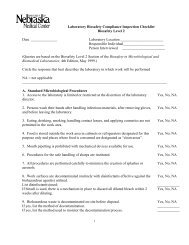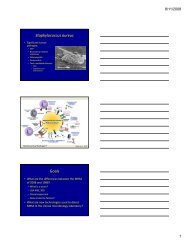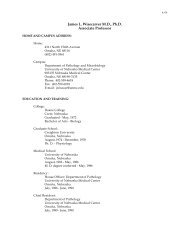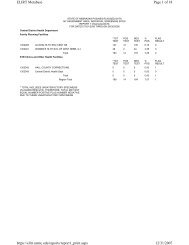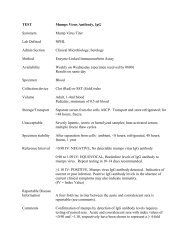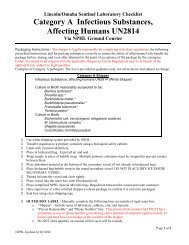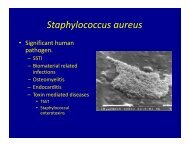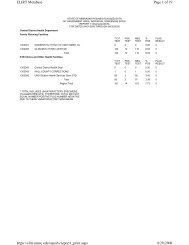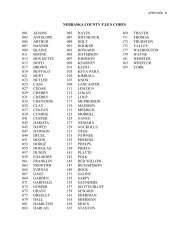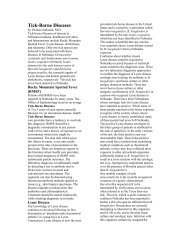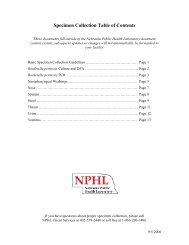Clinical Immunohematology (Blood Banking) (6 modules)
Clinical Immunohematology (Blood Banking) (6 modules)
Clinical Immunohematology (Blood Banking) (6 modules)
You also want an ePaper? Increase the reach of your titles
YUMPU automatically turns print PDFs into web optimized ePapers that Google loves.
<strong>Clinical</strong> <strong>Immunohematology</strong> (<strong>Blood</strong> <strong>Banking</strong>) (6 <strong>modules</strong>)<br />
Immunology Review (3 CEU)<br />
‣ Innate and acquired immunity; cell-mediated and humoral immunity; primary vs.<br />
secondary humoral response; phagocytosis; inflammation; major histocompatibility<br />
complex; pathogen recognition; T lymphocyte subsets<br />
‣ Immunoglobulins – definitions, structures, classes and characteristics; antigens –<br />
definitions, characteristics, immunogenicity, and antigenicity; antigen-antibody reactions<br />
– definitions, reactions and influencing conditions; immunology vs. serology; test<br />
methods for visualizing Ag-Ab reactions – agglutination-based, neutralization,<br />
precipitation-based and labeled methods<br />
‣ Complement components; functions; activation pathways – classical, alternative, and<br />
lectin; deficiencies; pathologic conditions<br />
Genetics Review (1 CEU)<br />
‣ Definition of chromosomes, genes, locus, alleles, homozygous, heterozygous, genotype,<br />
phenotype, dominant, recessive and codominant; predicting genotypes; sex-linked<br />
inheritance; Hardy-Weinberg equation; gene frequency<br />
The Antiglobulin Test (3 CEU)<br />
‣ Anti-human globulin (AHG) reagents – descriptions, types, controls; Direct antiglobulin<br />
test (DAT) - description, procedure, causes, implications, significance; Indirect<br />
antiglobulin test (IAT) – description, procedure, applications, influencing factors,<br />
significance<br />
‣ AHG production, contents and action; Coombs control cells; Hemolytic transfusion<br />
reaction; hemolytic disease of the fetus and newborn; drug induced hemolytic anemia;<br />
autoimmune hemolytic anemia; zeta potential; low ionic strength solution (LISS);<br />
Polyethylene glycol (PEG); Polybrene; enzymes; potentiators; sources of error in the<br />
antiglobulin test<br />
‣ How to grade agglutination reactions – tube method, microscopically, Rouleaux, mixed<br />
field, and documentation<br />
ABO System (2 CEU)<br />
‣ <strong>Clinical</strong> importance; blood group distribution; genetics/inheritance – A, B, H genes, ABO<br />
genetic pathway; ABH antigens; phenotypes/subgroups of A and B; Bombay phenotype;<br />
antibodies – Landsteiner’s law; ABO testing – front typing vs. back typing, polyclonal vs.<br />
monoclonal reagents<br />
Rh System (3 CEU)<br />
‣ <strong>Clinical</strong> importance; inheritance; nomenclature systems and converting between systems;<br />
antigens, compound antigens, deletions & Rh null; relationship of LW to Rh; determining<br />
1
genotypes; weak D theory and testing; antibody characteristics; Rh testing – reagents,<br />
controls, troubleshooting discrepant results<br />
Other Systems (3 CEU)<br />
‣ Characteristic of antigens and antibodies of the remaining major blood group systems;<br />
nomenclature; definitions of terms used in discussing antigens and antibodies; classifying<br />
antibodies as immune or naturally occurring, autoantibody or alloantibody; reaction<br />
characteristics of antibodies in the major systems; clinical significance; high incidence<br />
and low incidence antigens & their antibodies; HTLA antibodies; significance of HLA<br />
system in transfusion medicine<br />
2



